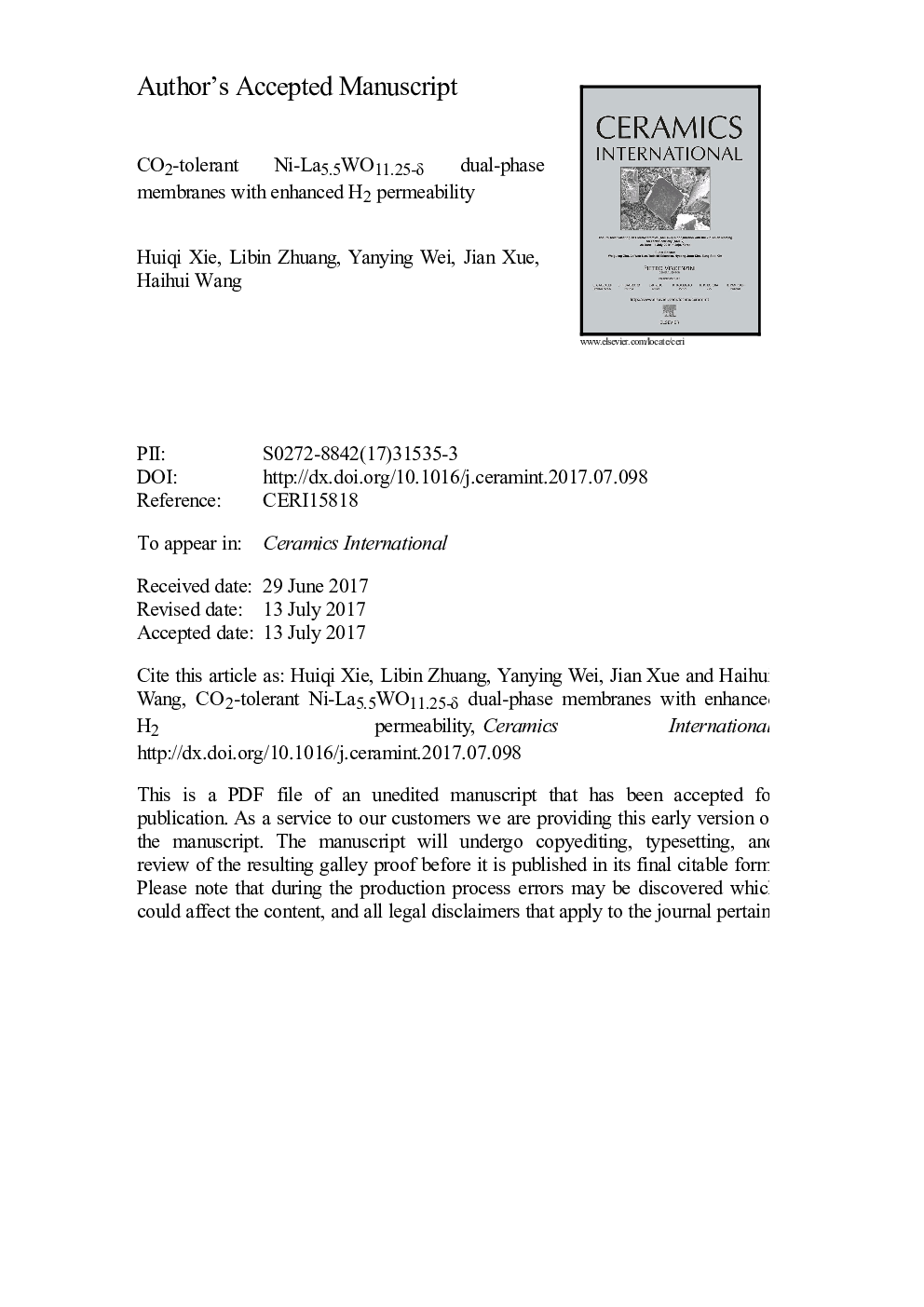| Article ID | Journal | Published Year | Pages | File Type |
|---|---|---|---|---|
| 5437335 | Ceramics International | 2017 | 29 Pages |
Abstract
Enhancing the ambi-polar conductivity of the ceramic hydrogen permeable membrane by introducing an electron conductive metallic phase is quite effective, which is helpful for the hydrogen permeation flux improvement. To develop CO2-tolerant hydrogen permeable membranes with better hydrogen permeability, Ni-La5.5WO11.25-δ (Ni-LWO) cermet membranes are fabricated. The alkaline earth metal-free ceramic LWO is used as the main proton-conductive phase and Ni is used as the main electron-conductive phase. The Ni-LWO membrane exhibits good chemical stability in CO2-containing atmosphere since its hydrogen permeability maintains well in the measurement for about 180 h. Compared with the LWO ceramic membrane, the hydrogen permeability of the Ni-LWO membrane has been improved significantly. The Ni/LWO ratio has great impact on the performance of the cermet membrane. Meanwhile, among all the dual-phase Ni-LWO membranes with different Ni/LWO volume ratios, the membrane with 60 vol% Ni shows the highest hydrogen permeation flux of 0.18 ml minâ1 cmâ2 at 1000 °C when the feed gas contains 50% H2.
Related Topics
Physical Sciences and Engineering
Materials Science
Ceramics and Composites
Authors
Huiqi Xie, Libin Zhuang, Yanying Wei, Jian Xue, Haihui Wang,
